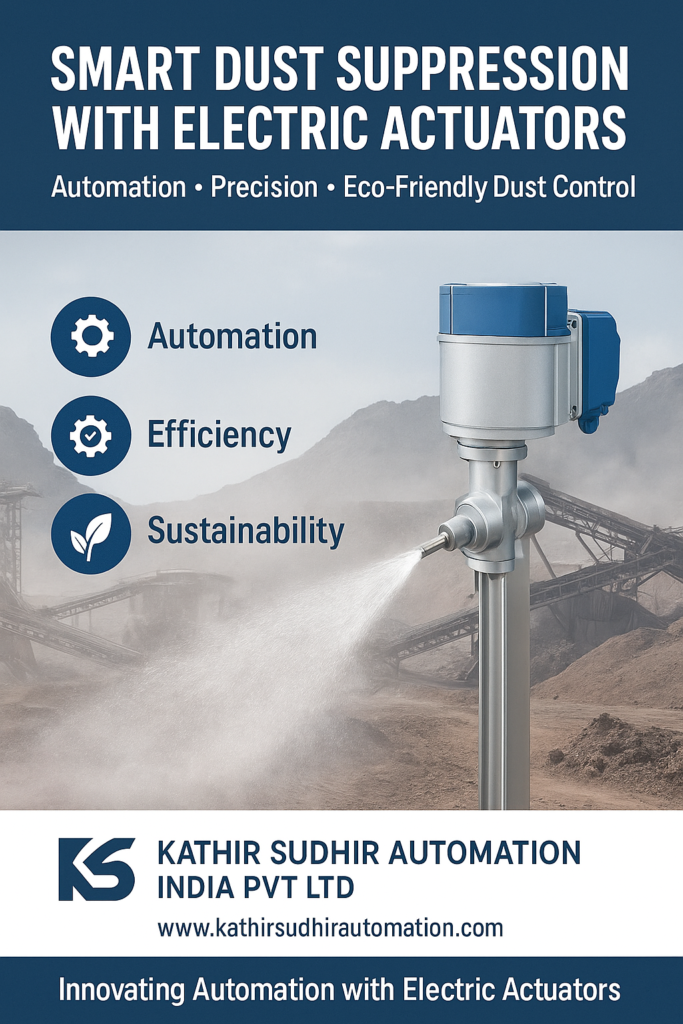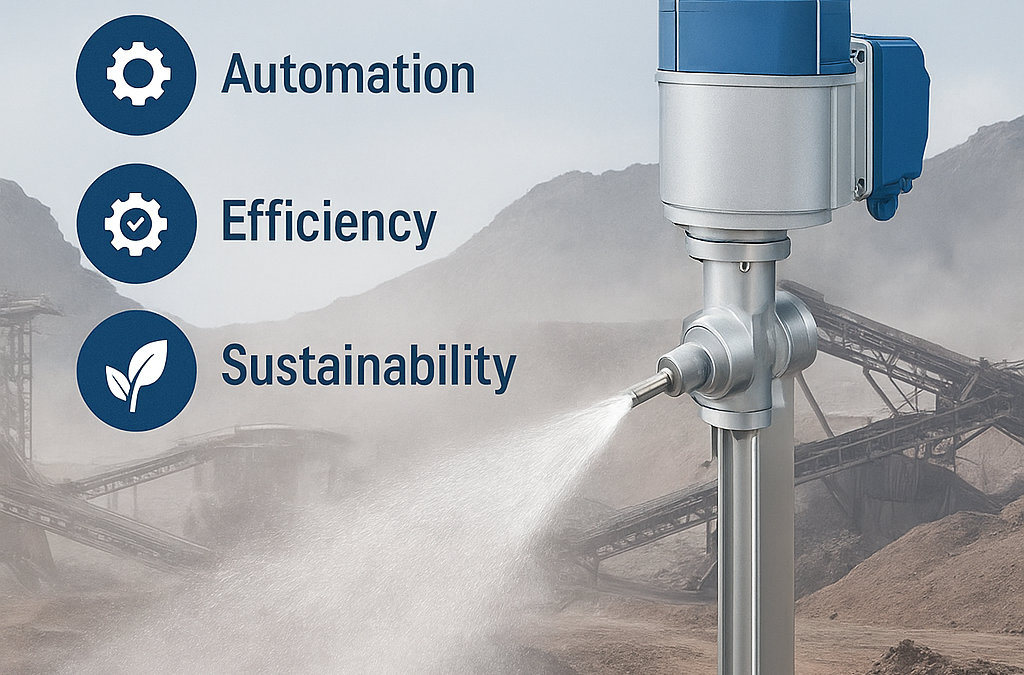In industries such as mining, construction, cement, and bulk material handling, dust control is a major challenge. Excessive dust not only impacts air quality and worker health but also reduces equipment efficiency and increases maintenance costs. To address this, dust suppression systems are widely used, and integrating electric actuators into these systems brings a new level of automation, precision, and reliability.

Why Electric Actuators?
Traditional dust suppression systems often rely on manual operation, pneumatic, or hydraulic controls. However, electric actuators offer several advantages that make them the preferred choice for modern industries:
- Energy Efficient – Operates only when required, with low power consumption.
- Low Maintenance – No leaks or complex fluid systems as in hydraulics or pneumatics.
- Precision Control – Accurate positioning ensures optimal dust suppression with minimal water wastage.
- Environment-Friendly – Runs on clean electric power, reducing carbon footprint.
Applications of Electric Actuators in Dust Suppression
- Nozzle Positioning – Actuators adjust spray nozzles automatically to target dust-intensive areas, ensuring efficient coverage.
- Valve Operation – Electric actuators regulate water flow precisely, maintaining consistent pressure and volume.
- Mobile Equipment Integration – Mounted on conveyors, crushers, or trucks for on-demand dust control.
- Remote & Automated Control – Integration with sensors and PLCs enables automatic activation when dust levels exceed thresholds.
Benefits for Industries
- Improved Workplace Safety – Reduces airborne dust, protecting workers from respiratory hazards.
- Optimized Water Usage – Prevents over-spraying, ensuring cost-effective operation.
- Reduced Downtime – Automation minimizes manual intervention, keeping systems operational longer.
- Scalable Solutions – Easily adaptable for small plants to large industrial operations.
Real-World Example
Imagine a mining conveyor system where electric actuators adjust water spray nozzles automatically based on dust sensor feedback. This ensures dust is suppressed effectively only when required, avoiding water wastage and improving efficiency.
Conclusion
Electric actuators are revolutionizing dust suppression systems by bringing automation, efficiency, and sustainability into the process. As industries increasingly move toward eco-friendly and smart solutions, integrating electric actuators ensures both operational excellence and compliance with environmental regulations.

